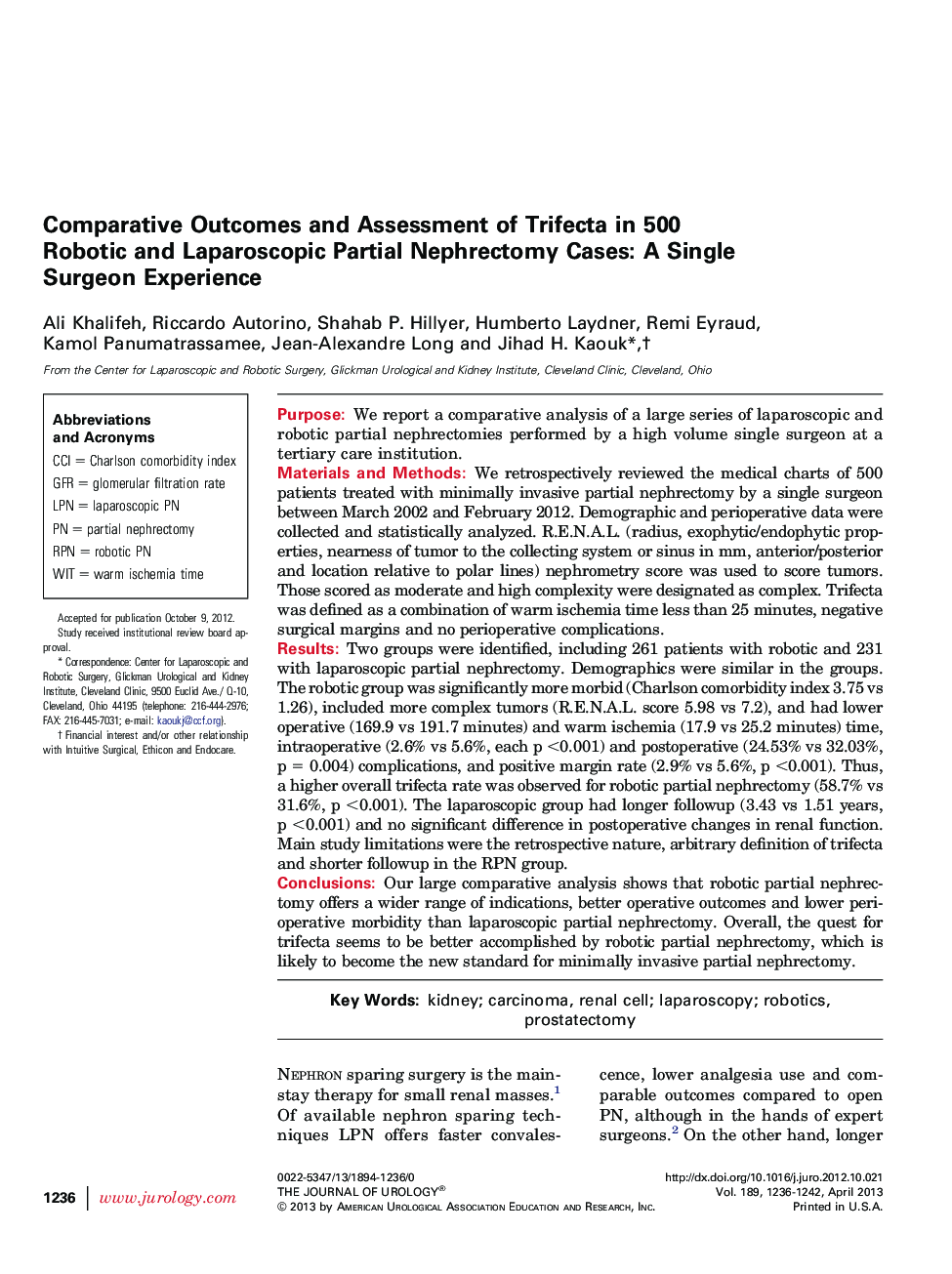| کد مقاله | کد نشریه | سال انتشار | مقاله انگلیسی | نسخه تمام متن |
|---|---|---|---|---|
| 3866764 | 1598920 | 2013 | 7 صفحه PDF | دانلود رایگان |

PurposeWe report a comparative analysis of a large series of laparoscopic and robotic partial nephrectomies performed by a high volume single surgeon at a tertiary care institution.Materials and MethodsWe retrospectively reviewed the medical charts of 500 patients treated with minimally invasive partial nephrectomy by a single surgeon between March 2002 and February 2012. Demographic and perioperative data were collected and statistically analyzed. R.E.N.A.L. (radius, exophytic/endophytic properties, nearness of tumor to the collecting system or sinus in mm, anterior/posterior and location relative to polar lines) nephrometry score was used to score tumors. Those scored as moderate and high complexity were designated as complex. Trifecta was defined as a combination of warm ischemia time less than 25 minutes, negative surgical margins and no perioperative complications.ResultsTwo groups were identified, including 261 patients with robotic and 231 with laparoscopic partial nephrectomy. Demographics were similar in the groups. The robotic group was significantly more morbid (Charlson comorbidity index 3.75 vs 1.26), included more complex tumors (R.E.N.A.L. score 5.98 vs 7.2), and had lower operative (169.9 vs 191.7 minutes) and warm ischemia (17.9 vs 25.2 minutes) time, intraoperative (2.6% vs 5.6%, each p <0.001) and postoperative (24.53% vs 32.03%, p = 0.004) complications, and positive margin rate (2.9% vs 5.6%, p <0.001). Thus, a higher overall trifecta rate was observed for robotic partial nephrectomy (58.7% vs 31.6%, p <0.001). The laparoscopic group had longer followup (3.43 vs 1.51 years, p <0.001) and no significant difference in postoperative changes in renal function. Main study limitations were the retrospective nature, arbitrary definition of trifecta and shorter followup in the RPN group.ConclusionsOur large comparative analysis shows that robotic partial nephrectomy offers a wider range of indications, better operative outcomes and lower perioperative morbidity than laparoscopic partial nephrectomy. Overall, the quest for trifecta seems to be better accomplished by robotic partial nephrectomy, which is likely to become the new standard for minimally invasive partial nephrectomy.
Journal: The Journal of Urology - Volume 189, Issue 4, April 2013, Pages 1236–1242